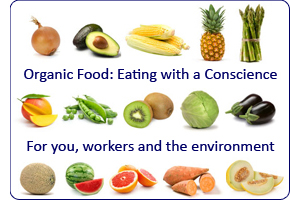(Beyond Pesticides, June 7, 2010) With thousands of violations cited, the pest control company and applicator responsible for the deaths of two young children are only fined several tens of thousands of dollars, a mere slap on the hand. The Utah Department of Agriculture and Foodâs (UDAF) Division of Plant Industry has finally filed multiple charges of violations against Bugman Pest and Lawn, Inc. of Bountiful, Utah, and employee Cole Nocks associated with the February 5, 2010 application of the pesticide Fumitoxin (active ingredient: aluminum phosphide) at the residence of Nathan and Brenda Toone of Layton, Utah that lead to the death of their two daughters ages 15-months and 4 years. In addition to the Layton incident, investigators discovered additional violations of the Utah Pesticide Control Act by the company and other employees. The UDAF seeks to revoke Mr. Nocksâs applicator license and has issued him a $27,000 fine, while Bugman Pest and Lawn, Inc. is fined $32,000. Under law, the UDAF is only allowed to file civil penalties.
Investigators determined that on February 5, 2010 applicator Cole Nocks operated in a faulty, careless or negligent manner by misapplying the highly toxic and restricted use pesticide, Fumitoxin. Mr. Nocksâs improper application allowed the pesticide to runoff or drift from the target area causing human harm, as high levels of phosphine gas were detected in the Toone residence. He failed to follow label directions and federal law by applying large amounts of Fumitoxin pellets in several locations that were within a required 15-foot buffer zone of the residence. He did not have a Fumigation Management Plan which would have required him to provide the Toones with label information, an MSDS (materials safety data sheet) and require him to return in one or two days to re-inspect the fumigated area. At the time of the application, Fumitoxin was restricted from use within 15 feet of any residence.
The Utah Medical Examinerâs Office determined that two children who died at the Toone residence had elevated levels of phosphorous and lung damage associated with inhaling a harmful substance which appears consistent with the above information.
Mr. Nocks is required to attend an administrative hearing at the Utah Department of Agriculture and Food later this month to answer the charges.
The charges against Bugman Pest and Lawn, Inc. for the Layton incident include using or causing to be used any pesticide in a manner inconsistent with its labeling or rules; and, applying Fumitoxin without the required Fumigation Management Plan.
âThis is a tragic and unfortunate event for the Toone family,â said Pesticide Program Manager, Clark Burgess.
In the course of the Layton investigation, Plant Industry investigators discovered numerous additional violations of The Utah Pesticide Control Act by Bugman Pest and Lawn, Inc., and several of its employees dating back to April of 2009. The following charges for âNeglecting or, after notice, refusing to comply with the provision of the Pesticide Act;â âRefused or neglecting to keep and maintain required records;â and, âUsed, or caused to be used any pesticide in a manner inconsistent with its labelingâ include the Layton incident as well as several hundred other pesticide applications at locations throughout the Wasatch Front:
⢠More than 3,000 records violations ranging from failing to identify product used, not documenting the rate or amount of product applied;
⢠No Fumigant Management Plan created for any of the 53 applications of Fumitoxin by five different employees;
⢠Numerous ineffective applications of termiticide;
⢠Mis-application of Fumitoxin, termiticide and Ramik Brown; and,
⢠Company failed to properly placard its storage area where Fumitoxin was stored.
Fumitoxin is a restricted use pesticide that requires applicators undergo specific training regarding its use. Utah code requires commercial pesticide applicators undergo testing and certification on a regular basis and that commercial pesticide companies employ trained applicators when working with all pesticides. The UDAF conducts regular training and certification courses to help applicators meet State certification requirements.
The U.S. Environmental Protection Agency (EPA) on April 7, 2010 banned the use of aluminum and magnesium phosphide products (Fumitoxin) in residential areas, increased buffer zones to 100 feet for treatment around non-residential buildings that could be occupied by people or animals, and require more protective product labeling. Yet, human exposure to these toxic chemicals, though slightly minimized, would nevertheless continue because of their continued availability for use on athletic fields and playgrounds, around non-residential buildings, and in agricultural production.
The EPA is funding, in partnership with the UDAF, a program to educate the public about the dangers of fumigant pesticides and to increase enforcement of other fumigant pesticides in Utah.
The death of these children and the poisoning of the family raise serious issues about the adequacy of the pesticideâs label restrictions, approved by the U.S. Environmental Protection Agency (EPA), and their enforceability. In the case of aluminum phosphide, EPA has allowed the use that led to these avoidable deaths after proposing to ban the pesticideâs residential uses in 1998 in its reregistration eligibility document (RED). EPA plans to begin their registration review in 2013.
Aluminum phosphide is known to be highly acutely toxic when ingested or inhaled. Symptoms of mild to moderate acute exposure include nausea, abdominal pain, tightness in chest, excitement, restlessness, agitation and chills. Symptoms of more severe exposure include, diarrhea, cyanosis, difficulty breathing, pulmonary edema, respiratory failure, tachycardia (rapid pulse) and hypotension (low blood pressure), dizziness and/or death.
Beyond Pesticides believes that integrated pest management (IPM) is a vital tool that aids in the rediscovery of non-toxic methods to control rodents and facilitates the transition toward a pesticide-free (and healthier) world. It offers the opportunity to eliminate or drastically reduce pesticide use and to minimize the toxicity of and exposure to any products that are used. Sanitation, structural repairs, mechanical and biological control, pest population monitoring are some IPM methods that can be undertaken to control rodents.
EPA, to its credit, recognizes that the use of toxic chemicals to control rodents is itself not effective rodent management. IPM practices are recommended by EPA for rodent control in and around households. EPA advises that effective rodent control requires sanitation, rodent proofing, and removal of rodent harborage; habitat modification to make an area less attractive to rodents, and discourage new populations from recolonizing the area. Non-chemical devices such as snap traps and other trapping systems are also affordable and quite effective as a method for rodent control.
However, while EPA recognizes that IPM practices are safe and effective methods for controlling rodents, the dependency on the rodenticides as a means of control continues. Given that EPA acknowledges that effective rodent management will not be achieved without the adoption of safer IPM techniques, it is imperative that these practices are promoted to the consumer so that efforts can work toward the elimination of public and environmental exposures to low levels of toxic rodenticides. To do this, rodenticide labels must require the users to establish IPM practices and only allow the introduction of poisons as a part of this approach as a last resort.
Beyond Pesticides and other organizations have raised concerns about chemicals that volatilize as gas and chemical fumigants that move through the air from the target site (be it an animal burrow or an agricultural crop). In June 2009, Beyond Pesticides and 27 groups from across the country sent Administrator Lisa Jackson indicating that the agencyâs new fumigants policy âcontinues an outdated EPA approach to pesticide regulation that adopts unrealistic and unenforceable standards as risk mitigation measures, in an age of safer, greener approaches to agricultural pest management.â
For more information on rodenticides and the alternatives to managing rodents, see Beyond Pesticides fact sheet âRodents Teach Lesson of Failed Chemical Controls: City officials gather to learn new approaches to rodent management less dependent on chemicals, more focused on habitat reduction.â For least toxic control of mice and other pests visit Beyond Pesticidesâ alternatives page.















